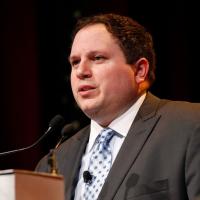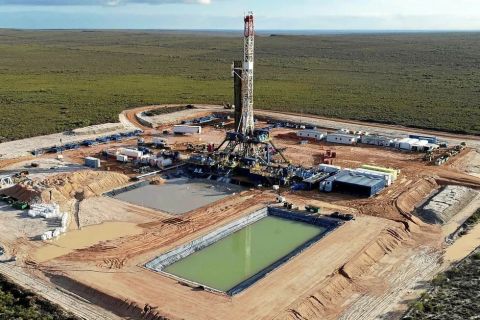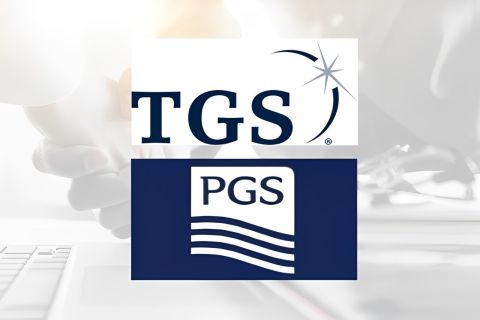
(Source: Shutterstock)
Diverse asset bases have been key drivers of growth in the 2019 fiscal year for both Summit Midstream Partners LP and Crestwood Equity Partners LP. Both MLPs have benefitted from increased activity in multiple plays that are leading to new opportunities.
Though the companies have focused on different plays, their results and strong future outlooks are both fueled by organic growth projects. In the case of Summit Midstream, these include projects in the Denver-Julesberg Basin and the Utica Shale.
Summit commissioned a new 60 million cubic feet per day (MMcf/d) cryogenic natural gas processing plant in the D-J. This plant triples the company’s processing capacity in the play and will lead to a second 60 MMcf/d plant in the future, according to company officials.
As of the first week of August, the new plant is averaging more than 30 MMcf/d, which is a 50% increase over the company's second quarter processing volumes in the DJ Basin. Summit anticipates further volume growth through the remainder of the fiscal year.
“We continue to closely evaluate the timing of construction for this [second] plant, and we will proceed with the plant's construction only when we have the appropriate level of customer support,” Leonard Mallet, Summit Midstream’s interim president and CEO, said during a recent conference call to discuss second-quarter earnings.
Mallet also noted that the company’s Utica Shale segment is continuing to experience a change in its throughput mix toward higher margin volumes that are originating from pad sites directly connected to the Summit system.
“Late in the second quarter, our anchor customer returned four new wells in line behind our [Utica] system. These wells, together with an additional two wells expected in the fourth quarter of 2019, will facilitate higher pad volumes in the second half of 2019, and this activity will drive our segment adjusted earnings growth in the Utica,” he said.
Summit anticipates more drilling in the Utica in second-half 2019 with five more wells scheduled to be drilled by a customer and connected to the Summit system.
“These five wells will represent a major growth catalyst for our Utica Shale segment. And we will be excited to see the production results from these wells in the first half of 2020,” Mallet said during the earnings call.
Redirecting Capital
Summit also recently announced ExxonMobil as its joint venture partner on the 130-mile Double E Pipeline project. This natural gas pipeline will have a capacity of 1.35 billion cubic feet per day (Bcf/d) and is backed by a number of 10-year take-or-pay volume commitments from various shippers, including XTO Energy.
The pipeline, which will connect to several receipt points in the Delaware Basin, will have the capability to expand to 1.85 Bcf/d through the installation of compression facilities at a later date. Summit Midstream anticipates spending about $350 million on its 70% share of the project.
Construction for the Double E Pipeline is expected to take about a year and will begin after receiving FERC approval, which is anticipated by the end of third-quarter 2020.
“Double E represents a critical part of our strategy for achieving scale, diversifying our operations downstream of the wellhead and becoming more integrated in our core focused areas. Our partnership with ExxonMobil represents a strong sign of confidence and validation in the project and in Summit overall,” Mallet said.
These two projects are a continuation of the company’s strategy of redirecting capital from legacy areas to high-growth, core-focus areas. To further this strategy, Summit is discussing several potential transactions. Mallet said these deals will help to streamline its portfolio through divestiture, which will help to improve its balance sheet by focusing capital deployment in core focus areas.
“We have a great deal of confidence in our outlook for the business in both the second half and over the long term. We have an excellent line of sight into cash flow ramp based on the ongoing ramp of our D-J facility, together with run rate volumes, and near-term completion activity in each of our core focus areas, which will be complemented over the long term by take-or-pay cash flows related to our Double E venture,” Mallet said.
Crestwood’s ‘One-Two Punch’
Similar to Summit, Crestwood Equity Partners’ asset base is designed to minimize risks through diversity from a geographic and operations standpoint.
“Strategically, we remain pleased with how the Crestwood portfolio is positioned across the industry. We continue to prudently invest capital and build out needed infrastructure in the Bakken and the Powder River Basin, supporting near-term supply growth there on some of the best rock in the lower 48, with both of those regions benefiting from really good producer netbacks driving activity,” Robert Phillips, chairman, CEO, and president of Crestwood, said during the company’s recent second-quarter earnings call.
According to Phillips, the Bakken and Powder River Basin provide a “great one-two punch to drive Crestwood’s results over the next few years.” On a longer-term basis, infrastructure expansion is expected to result in the company’s assets in the Marcellus Shale and Delaware Basin increasing their contributions to Crestwood’s earnings.
“While the midstream landscape continues to shift and certain regions and certain midstream services are challenged from time to time, we think Crestwood is uniquely positioned to excel in the current operating environment. We recognize what investors want. They want us to be increasingly focused on enhanced corporate governance and transparency, capital discipline which drives lower spending, and free cash flow generation that improves leverage,” Phillips said.
In line with this strategy, Crestwood remains committed to optimizing investor returns through a free cash flow positive business model where the mantra is “capital is sacred and each project must be evaluated on its individual merits,” according to Phillips.
This means the company will only invest in projects in its core growth areas that offer a strong return and are quickly accretive. As such, Crestwood’s capital budget for the 2019 fiscal year is between $425 million and $475 million with most of this capital being spent in the Bakken Shale and the Powder River Basin.
“When those expansion projects are complete, we think Crestwood’s full-year 2020 growth capital should drop to about $100 million to $150 million per year. And that’s a range that clearly provides a path to generating substantial free cash flow for Crestwood and our investors in 2020,” Phillips continued.
Recommended Reading
Brett: Oil M&A Outlook is Strong, Even With Bifurcation in Valuations
2024-04-18 - Valuations across major basins are experiencing a very divergent bifurcation as value rushes back toward high-quality undeveloped properties.
Marketed: BKV Chelsea 214 Well Package in Marcellus Shale
2024-04-18 - BKV Chelsea has retained EnergyNet for the sale of a 214 non-operated well package in Bradford, Lycoming, Sullivan, Susquehanna, Tioga and Wyoming counties, Pennsylvania.
Triangle Energy, JV Set to Drill in North Perth Basin
2024-04-18 - The Booth-1 prospect is planned to be the first well in the joint venture’s —Triangle Energy, Strike Energy and New Zealand Oil and Gas — upcoming drilling campaign.
PGS, TGS Merger Clears Norwegian Authorities, UK Still Reviewing
2024-04-17 - Energy data companies PGS and TGS said their merger has received approval by Norwegian authorities and remains under review by the U.K. Competition Market Authority.
Energy Systems Group, PacificWest Solutions to Merge
2024-04-17 - Energy Systems Group and PacificWest Solutions are expanding their infrastructure and energy services offerings with the merger of the two companies.





